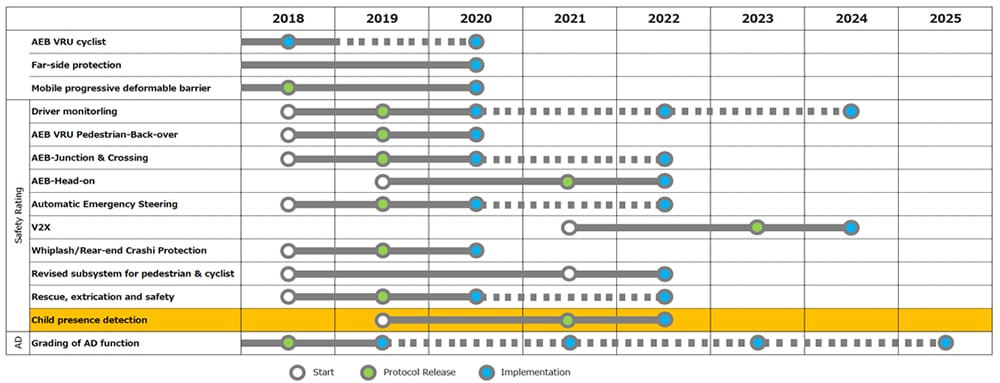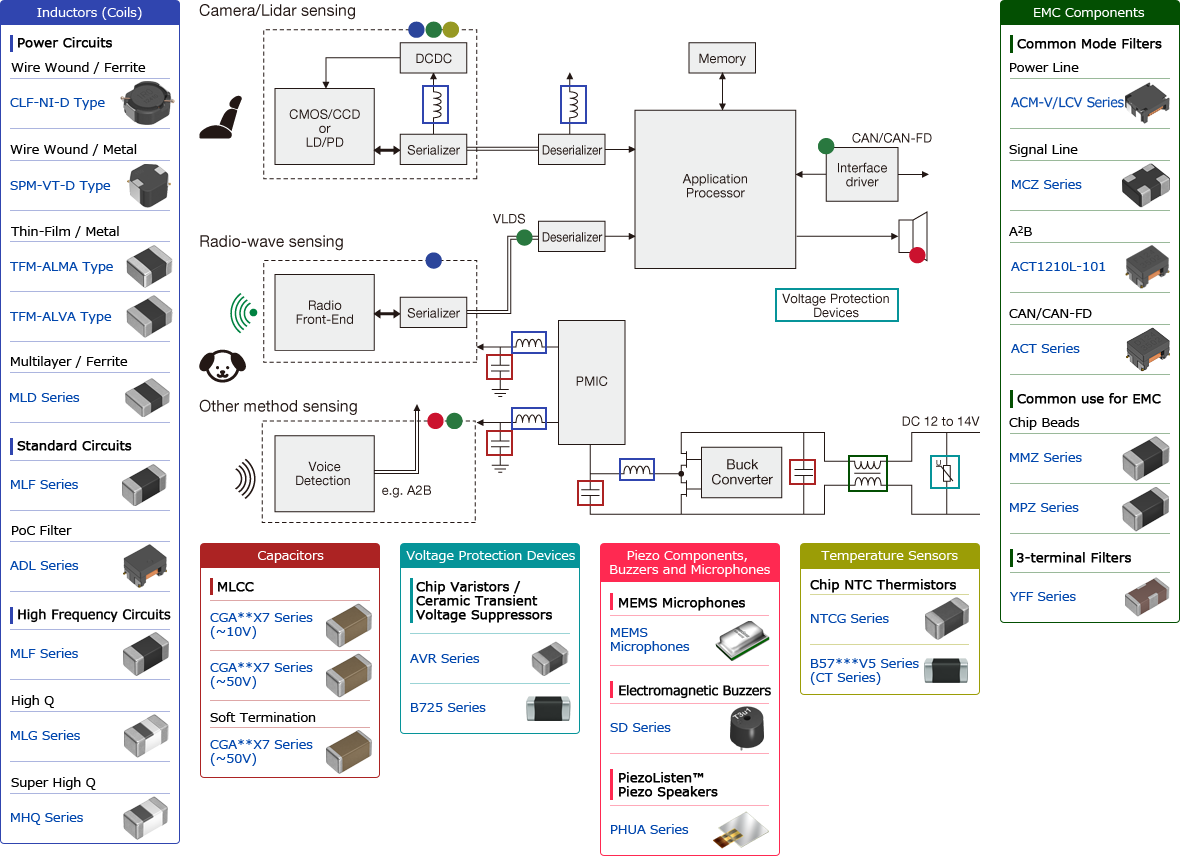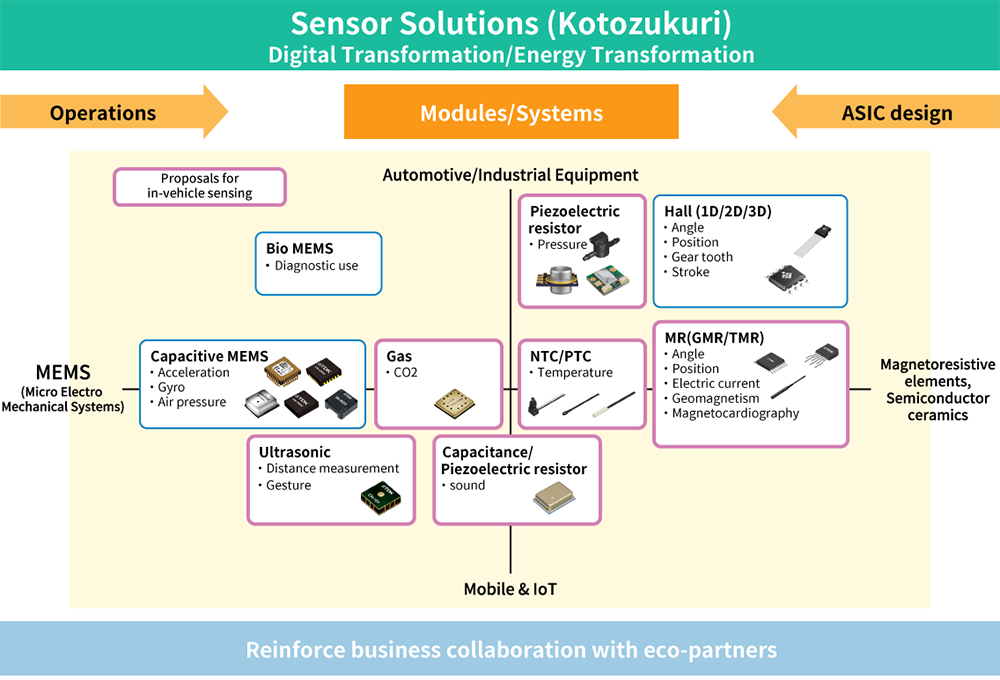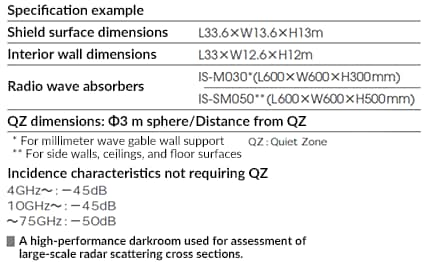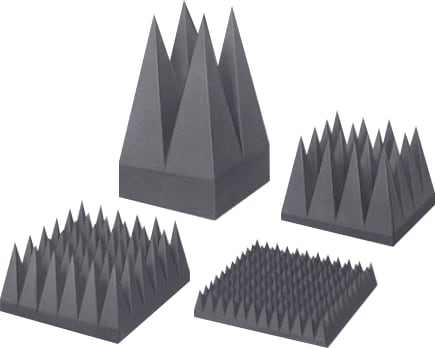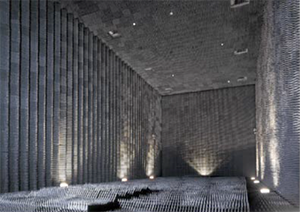Child Presence Detection System

Contents
- Overview of the child presence detection system
- Components proposed by TDK and their effects
- Passive components that contribute to the communications quality of in-vehicle cameras (ADL series)
- TDK is expanding its sensor portfolio
- TDK products support millimeter wave sensing device development (radio wave absorbent materials, anechoic chambers)
- Summary
Overview of the child presence detection system
The child presence detection system uses various sensors to detect the presence of a child or pet in the vehicle and notify and warn the driver. Euro-NCAP (European organisation for automotive safety assessment) is planning to evaluate the safety of vehicles equipped with a system to detect children left in a vehicle starting in 2022. A roadmap for evaluation criteria (Figure 1) has been formulated within Euro-NCAP, a European automobile safety testing programme, and it has been announced that evaluation of operation of child presence detection systems will be added to the scope of testing starting in 2022. *2
(*2) Euro-NCAP
Components proposed by TDK
Examples of representative circuits for child presence detection systems and TDK products are introduced.
Automotive/SafetyChild Presence Detection System
Here are the optimal products for Child Presence Detection System for automobile safety mechanisms, selected from the TDK Group's product lines, including inductors, EMC Components, and piezo components.
Passive components that contribute to the communications quality of in-vehicle cameras (ADL series)
The data captured by the onboard camera must be analyzed and processed by AI to determine if the object left behind is a child or pet. The most promising candidate for this is camera-based sensing. TDK provides circuit solutions centered on decoupling inductor components (ADL series), which are key products for the PoC (Power over Coaxial) method and are ideal for digital image communications.
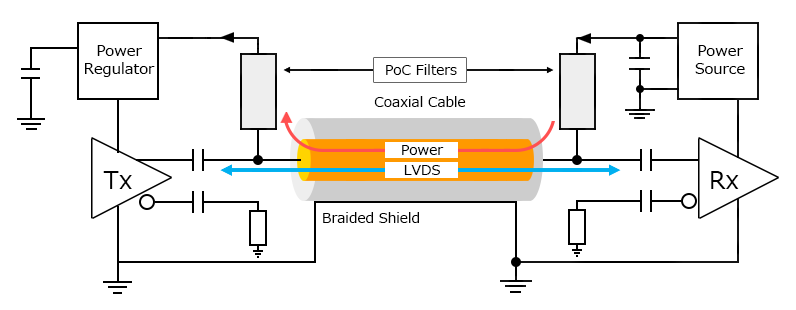
TDK is expanding its sensor portfolio
TDK makes proposals for the automotive market using materials, processes, and modularization technologies that employ magnetoresistive elements (Hall sensors and TMR sensors) and MEMS. In the field of in-vehicle sensing, we have commercialized gesture sensors that use ultrasonic waves, CO2 sensors, and MEMS microphones, and we are working to develop various sensor elements and applications in the future. MEMS microphones can be used to identify the cries of children and pets, and it is predicted that there will be a time when future cars can perform sophisticated monitoring functions.
TDK products support millimeter wave sensing device development (radio wave absorbent materials, anechoic chambers)
Sensing using millimeter wave bands is being considered as a method for detecting objects inside a vehicle. A millimeter wave sensing function with a wide frequency range of 60 GHz will be deployed as a global standard. Compared to imaging methods using visible light cameras, this method overcomes the problem of not being able to detect objects such as in cases where a child or pet is sleeping while completely covered by a blanket.
Absorbent materials for microwave anechoic chambers: IS materials
This radio wave absorbent material uses foamed polyethylene as a base and makes use of the ohm loss of carbon.
The radio wave absorbent IS material has excellent radio wave absorption performance not only for microwaves, but also from millimeter to sub-millimeter waves (up to 1 Thz).
Anechoic Chambers for Radar and Large Antenna Evaluation
Figure 5. Radio Wave Absorbent Materials for Microwave Anechoic Chambers: IS materials
Figure 6. Radio Wave Anechoic Chamber
Summary
Passenger detection systems are expected to be used not just with child presence detection systems, but also in MaaS (Mobility as a Service) and in cabin passenger control management and necessary for autonomous driving. These systems will control the air conditioning, sound, and even the opening and closing of airbags in the vehicle to provide a comfortable, safe, and secure environment. The TDK Group will continue to contribute to the creation of valuable automobiles by advancing its know-how and technologies based on its long-standing track record in automotive products.
Contact Information
Related Links
Product Portal
-

- Inductor (Coil) Product Information
- A comprehensive guide to various information on inductor (coil) products from the TDK Group.
-

- Sensors and Sensor Systems Product Information
- A comprehensive guide to various information on sensors and sensor systems from the TDK Group.
-

- Anechoic Chambers and Radio Wave Absorbers Product Information
- A comprehensive guide to various information on anechoic chambers and radio wave absorbers from the TDK Group.

